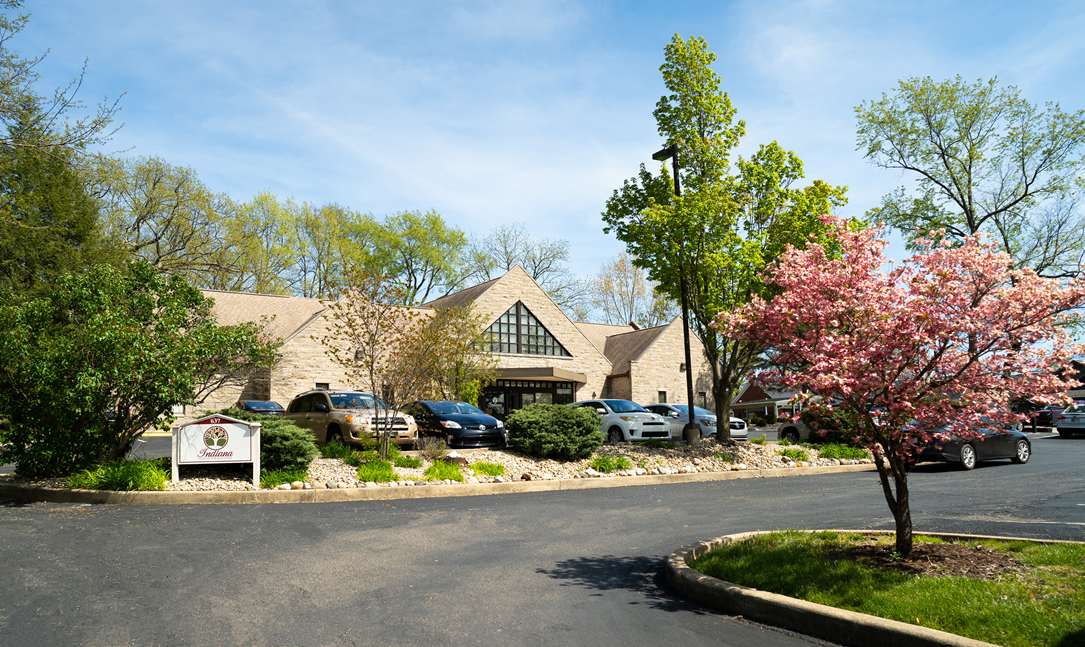Hyperbaric Oxygen Therapy Mental Health
Hyperbaric oxygen therapy (HBOT) is gaining attention for its potential benefits in mental health. This innovative treatment involves breathing pure oxygen in a pressurized environment, which may help improve brain function and mental well-being.
By increasing the amount of oxygen delivered to the brain, HBOT can support cognitive function, enhance mood, and potentially reduce symptoms of conditions such as depression and anxiety.
Research into the mental health benefits of HBOT is ongoing, but initial findings suggest it could be a promising complementary approach for those looking to improve their mental health and overall quality of life.
Key Takeaways
Mental health issues can affect mood, thinking, and behavior. Here’s what you need to know:
- Hyperbaric oxygen therapy can help reduce symptoms of depression and anxiety by increasing the oxygen supply to the brain.
- Improved brain function and mood stabilization are potential benefits of hyperbaric oxygen therapy for mental health.
- Regular hyperbaric oxygen therapy sessions enhance overall emotional well-being and cognitive function.
If you and your family member need assistance dealing with mental illness, contact Indiana Center for Recovery at (844) 650-0064 for reliable mental health care.

Introduction To Hyperbaric Oxygen Therapy
Hyperbaric oxygen therapy (HBOT) is a medical treatment that involves breathing pure oxygen in a pressurized chamber. This therapy increases blood oxygen, promoting healing and fighting infection. During a session, you lie inside a hyperbaric chamber, and the pressure gradually increases to levels higher than normal atmospheric pressure.
This allows your lungs to take in more oxygen, which is then carried by your blood to injured tissues. HBOT is used to treat various conditions, including decompression sickness, carbon monoxide poisoning, non-healing wounds, and certain infections. The therapy enhances the body’s natural healing processes and helps improve oxygen supply to areas with poor blood flow.
Historical Overview Of HBOT
Hyperbaric oxygen therapy has a rich history dating back to the 1600s. In 1662, a British clergyman named Henshaw created the first pressurized room, a “domicilium,” to treat various ailments. The concept evolved over the centuries, gaining scientific interest in the 19th century when Dr. Orville Cunningham used HBOT to treat flu victims during the Spanish flu pandemic.
The therapy gained further recognition in the mid-20th century, especially after successfully treating deep-sea divers with decompression sickness. Modern HBOT has since become a well-established medical practice, with technological advancements and expanded applications for treating various medical conditions.
Mechanisms Of Action
HBOT functions by increasing the amount of oxygen your blood can carry. During treatment, you breathe pure oxygen in a pressurized chamber. This process increases the oxygen concentration in your blood, enhancing your body’s natural healing processes. The extra oxygen helps fight bacteria, reduce inflammation, and stimulate the release of growth factors and stem cells, aiding tissue repair and regeneration.
How HBOT Works
In HBOT, patients enter a pressurized chamber and breathe 100% oxygen. The increased pressure permits your lungs to take in more oxygen than possible under normal atmospheric pressure. This oxygen-rich blood travels throughout your body, providing oxygen to tissues that may be starved due to injury or illness.
The high oxygen concentration helps your body heal faster and more efficiently. It supports wound healing, combats infections, and can even improve the function of damaged tissues.
Biological And Physiological Impact
HBOT significantly impacts the body’s biological and physiological systems. The increased oxygen levels reduce swelling and inflammation, promoting faster wound healing. It enhances the body’s ability to fight infections by boosting white blood cell activity.
HBOT also arouses the formation of new blood vessels in damaged tissues, improving blood flow and oxygen delivery to these areas. This therapy can help repair tissues and organs damaged by trauma, surgery, or chronic conditions, making it an appreciated treatment option for various medical issues.
HBOT And Mental Health
HBOT comprises breathing pure oxygen in a pressurized chamber. This therapy is known to enhance healing and improve various medical conditions. Recently, it has gained attention for its potential benefits in treating mental health disorders.
Overview Of Mental Health Conditions Treated
HBOT has shown promise in treating several mental health conditions. The therapy works by increasing oxygen levels in the brain, which can enhance cellular repair and reduce inflammation. This improvement can have a positive impact on various mental health problems, such as anxiety disorders, depression, PTSD, and cognitive dysfunction resulting from traumatic brain injuries.
Anxiety And Depression
Anxiety and depression are common mental health diseases that can severely disturb a person’s quality of life. Studies suggest that HBOT can help alleviate symptoms of both conditions. Increased oxygen flow to the brain can improve mood and reduce anxiety. Patients often report feeling more relaxed and less stressed after undergoing HBOT sessions.
Post-Traumatic Stress Disorder (PTSD)
PTSD is a condition that develops after facing or witnessing a traumatic event. It can lead to severe anxiety, flashbacks, and emotional numbness. HBOT can be beneficial for PTSD patients by promoting brain healing and reducing inflammation.
According to clinical studies, the therapy can also help in managing symptoms such as anxiety and depression, often associated with PTSD. Many patients experience a decrease in intrusive thoughts and an improvement in overall mental health.
Traumatic Brain Injury (TBI) And Cognitive Dysfunction
Traumatic brain injuries can lead to cognitive dysfunction, affecting memory, concentration, and overall brain function. HBOT has been found to support recovery by increasing oxygen delivery to the brain, promoting neuroplasticity, and aiding in the repair of damaged brain tissues.
Patients with TBI often show improvements in cognitive abilities, memory, and executive function after undergoing HBOT. This therapy can be a crucial part of the rehabilitation process for people with brain injuries, helping them regain their cognitive skills and improve their quality of life.
Benefits Of HBOT In Mental Health
HBOT has shown promise in improving various aspects of mental health.
Neurological Improvements
HBOT can significantly enhance neurological functions. The increased oxygen levels help repair damaged mind cells and stimulate the growth of new neurons, which can improve cognitive functions like memory, attention, and problem-solving skills.
People with conditions such as traumatic brain injury (TBI) and stroke have reported noticeable and significant improvements after undergoing HBOT. The therapy can also reduce inflammation in the brain, which is often linked to neurological disorders.
Emotional And Psychological Benefits
Emotionally and psychologically, HBOT can offer substantial benefits. The therapy can help reduce symptoms of depression and anxiety by promoting the release of serotonin, a neurotransmitter associated with mood regulation.
Patients often feel calmer and more balanced after sessions. HBOT also aids in decreasing PTSD symptoms by improving brain function and reducing oxidative stress. This can lead to better emotional regulation and an overall sense of well-being.
Quality Of Life Enhancements
HBOT can enhance the overall quality of life for individuals struggling with mental health issues. By improving brain function and emotional stability, patients often experience better sleep, increased energy levels, and enhanced social interactions, leading to a more active and fulfilling life.
Additionally, HBOT can support faster recovery from mental health crises and reduce the need for long-term medication, offering a more holistic approach to mental well-being.
Risks And Side Effects
Hyperbaric oxygen therapy (HBOT) can benefit mood disorders, but it’s important to understand the potential risks and side effects.
Common Side Effects
Common side effects of HBOT include ear discomfort, sinus pressure, and temporary vision changes. These occur because the therapy involves breathing pure oxygen in a pressurized chamber, which can affect the ears and sinuses similarly to changes experienced during air travel. Patients might also feel fatigue or lightheadedness after a session, but these effects typically fade quickly.
Rare And Serious Risks
While rare, serious risks can occur. Oxygen toxicity is a potential concern, where too much oxygen can cause lung damage or seizures. Barotrauma, or physical damage to body tissues due to pressure changes, is another risk affecting the ears, lungs, and brain. In very rare cases, HBOT can lead to oxygen poisoning, causing symptoms like chest pain, breathing difficulties, or convulsions.
Contraindications
Certain conditions make HBOT unsuitable for some individuals. People with untreated pneumothorax (collapsed lung) should not undergo HBOT due to the risk of worsening the condition. Those with certain types of ear infections, respiratory infections, or a history of ear surgery need careful evaluation before treatment.
Additionally, recent studies claim individuals with claustrophobia may find tolerating the enclosed chamber used in HBOT challenging. Pregnant women are generally advised against HBOT unless necessary, as the effects on fetal development are not well studied.
Frequently Asked Questions (FAQ)
Is oxygen therapy good for mental health?
Oxygen therapy, particularly hyperbaric oxygen therapy (HBOT), shows promise for mental health by increasing oxygen supply to the brain. This enhanced oxygenation can improve cognitive functions and potentially reduce depression symptoms, anxiety, and post-traumatic disorder.
HBOT may support neurogenesis and decrease inflammation, improving mental health outcomes. However, while initial findings are promising, more extensive studies are needed to confirm these benefits. Always check with a healthcare expert before starting any new treatment.
What is hyperbaric oxygen therapy good for?
Hyperbaric oxygen therapy (HBOT) is beneficial for treating various conditions by increasing oxygen supply to tissues. It is commonly used for wound healing, decompression sickness (the bends), carbon monoxide poisoning, and certain infections.
HBOT promotes faster recovery by enhancing oxygen delivery to damaged tissues, reducing inflammation, and stimulating new blood vessel formation. It has also shown promise in improving symptoms of conditions like traumatic brain injury, stroke, and some mental health disorders. Always consult a healthcare provider to determine if HBOT suits your needs.
How does a hyperbaric oxygen chamber feel?
Inside a hyperbaric oxygen chamber, you may feel a slight pressure in your ears, similar to being on an airplane. The chamber is comfortable, with a clear view outside, allowing you to relax, read, or watch TV. You might feel warm as the pressure increases, but it typically subsides. Breathing pure oxygen can be refreshing.
Sessions usually last between 30 minutes to two hours. Most people find the experience relaxing, though it’s important to follow any specific directions provided by the healthcare provider overseeing the treatment.
Grow Stronger Every Day With Indiana Center For Recovery
Unlock your potential for an improved and happier life with Indiana Center for Recovery. Our comprehensive mental health treatment program offers residential care, outpatient services, and integrated support tailored to your needs.
Our skilled therapists use evidence-based therapies, such as Cognitive Behavioral Therapy (CBT) and eye movement desensitization and reprocessing (EMDR), to help you achieve lasting change.
Take the first step towards a healthier, more fulfilling life today. Contact us at (844) 650-0064 to begin your journey with our compassionate team.



 100% Confidential
100% Confidential